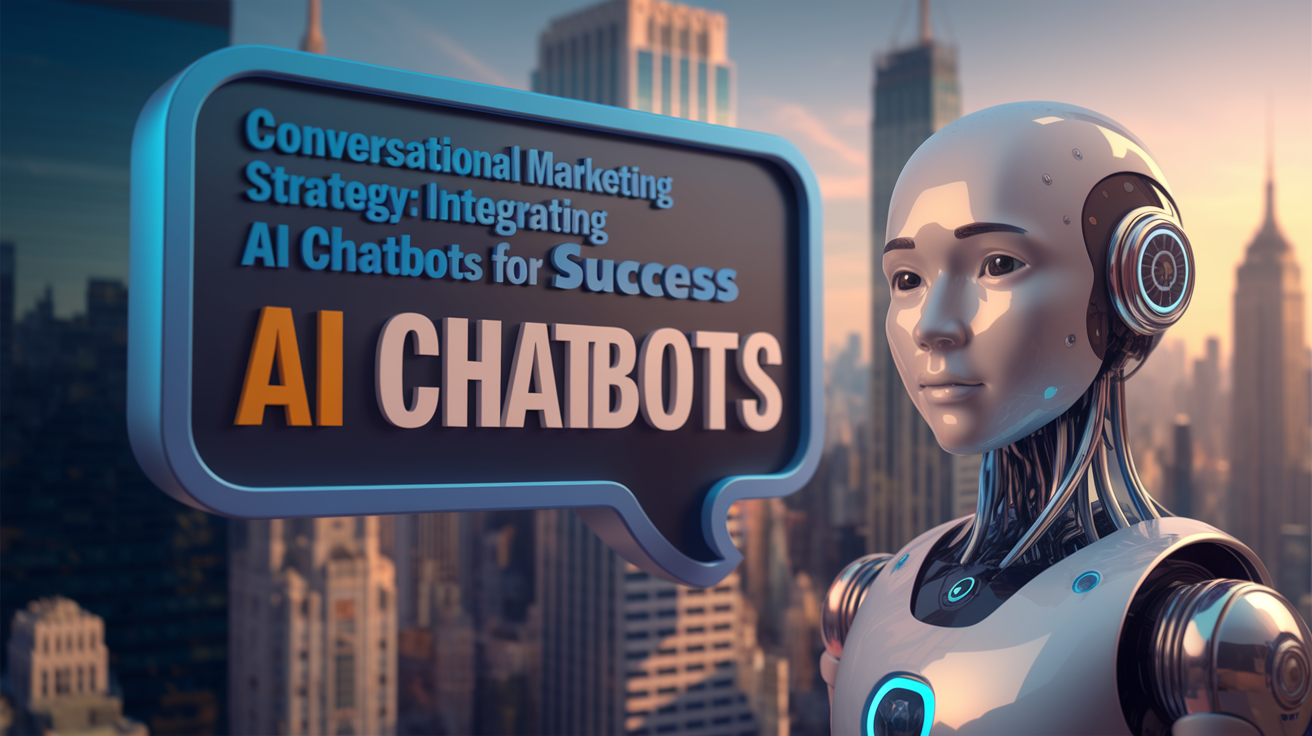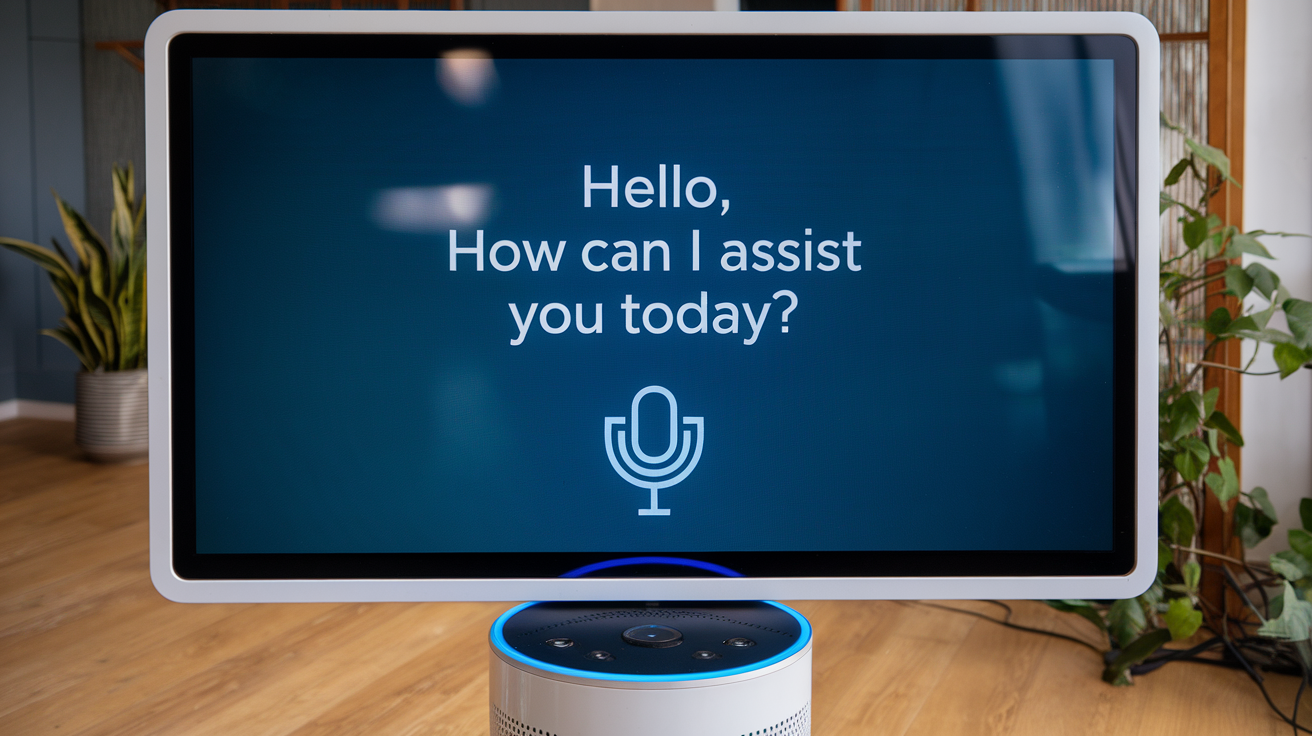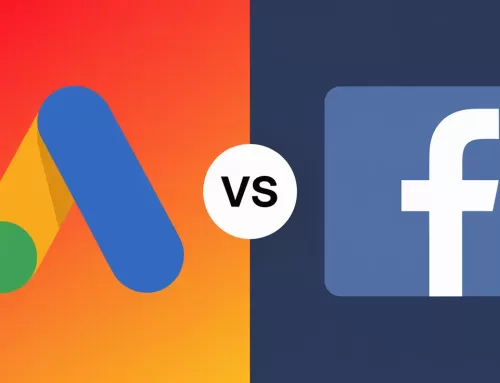
An AI chatbot is a powerful tool in a conversational marketing strategy. It enables real-time, two-way conversations with customers. Unlike traditional marketing, conversational marketing focuses on instant and interactive responses, making each interaction feel personal.
With AI chatbots, businesses can offer 24/7 support, answer questions, recommend products, and gather useful data—all automatically. These chatbots mimic human conversation, so customers get quick, relevant help without waiting.
This guide will walk you through using AI chatbots in a conversational marketing strategy. You’ll learn the benefits, how to get started, and tips for solving common issues. With these insights, your business can improve customer experience, boost engagement, and increase sales.
1. Deep Dive into Conversational Marketing
Conversational marketing is a strategy focused on real-time, two-way interactions between businesses and customers. Instead of relying on one-way messages like emails or ads, conversational marketing engages customers directly through channels like chatbots, live chat, and messaging apps. The goal is to create a smoother, more interactive experience for the customer.
Core Principles of Conversational Marketing
- Personalization: Each interaction is tailored to the customer’s needs and interests. By responding to questions in real time, businesses can make each conversation feel unique and relevant to the individual.
- Immediacy: Conversational marketing is all about fast responses. Customers expect answers without delay, whether they’re browsing a website or reaching out on social media.
- Convenience: The strategy emphasizes easy access to information. Customers can get quick answers and solutions without waiting for a callback or email.
Why Conversational Marketing Is Important
With more customers seeking quick and easy solutions online, conversational marketing meets these expectations. It offers instant engagement and helps companies stand out by providing a more human touch—even when powered by AI. Whether it’s a simple question or a purchasing decision, conversational marketing makes each interaction efficient and effective.
Trends in Conversational Marketing
- Growth of AI Chatbots: Many companies now use AI chatbots to manage customer inquiries. These chatbots handle basic questions, recommend products, and offer 24/7 support.
- Expansion on Social Media: Social platforms like Facebook and WhatsApp have integrated messaging options for business, allowing companies to connect with customers where they spend their time.
- Voice-Based Interactions: Voice technology is emerging as a new area for conversational marketing, allowing customers to engage with brands through voice assistants.
Conversational marketing puts customers at the center of the experience, offering them instant help and a personal touch. It’s a modern approach that builds trust, improves satisfaction, and, when done well, increases sales.
2. The Role of AI Chatbots in Enhancing Conversational Marketing

Demonstrating AI chatbot interaction for enhanced customer engagement in a professional workspace.
An AI chatbot is a virtual assistant that uses artificial intelligence to interact with customers in real time. AI chatbots play a central role in a conversational marketing strategy by making customer interactions faster, easier, and more personalized.
Capabilities of AI Chatbots
- Answering Common Questions: AI chatbots can quickly handle frequently asked questions, like shipping details, return policies, or product availability. This saves customers time and helps reduce the load on customer service teams.
- Providing 24/7 Support: Unlike human agents, chatbots are available around the clock. They can assist customers at any time, ensuring they always have access to help when they need it.
- Guiding the Buying Process: AI chatbots can recommend products, offer promotions, and guide customers through the buying process. For example, a chatbot might suggest similar products if an item is out of stock or offer a discount code to encourage a purchase.
- Collecting Customer Feedback: After a conversation, AI chatbots can ask customers for feedback. This helps businesses understand customer satisfaction and identify areas for improvement.
AI Chatbots vs. Traditional Automation
Traditional automation, like email autoresponders, can feel impersonal and slow. AI chatbots, on the other hand, respond instantly, using natural language to make conversations feel more human. They can adapt to the customer’s tone and context, creating a smoother experience.
Examples of AI Chatbots in Action
- Retail: Many e-commerce sites use AI chatbots to answer product questions, suggest items, and guide customers to checkout. For instance, a clothing retailer’s chatbot might recommend a matching accessory based on items in the customer’s cart.
- Banking: Banks use chatbots to help customers check balances, make transactions, or find nearby ATMs. A chatbot can handle routine tasks quickly, giving customers a faster option than visiting a branch.
- Healthcare: Healthcare providers use AI chatbots to answer health-related questions, schedule appointments, and provide information about services.
AI chatbots are valuable in conversational marketing because they combine speed, personalization, and availability. This makes them a cost-effective way to improve customer experience and keep users engaged.
3. Key Benefits of Integrating AI Chatbots into a Marketing Strategy
Integrating AI chatbots into a conversational marketing strategy offers many advantages. By combining automation with a human-like touch, chatbots help businesses connect with customers in more meaningful ways. Here are some key benefits of using AI chatbots.
1. Enhanced Customer Engagement
AI chatbots keep customers engaged by responding instantly to their questions. When a customer visits a website, a chatbot can greet them, answer questions, and guide them to useful resources. This immediate response creates a positive first impression and encourages customers to stay longer, making them more likely to engage with the brand.
2. Personalization
AI chatbots can provide a highly personalized experience. By analyzing customer data and past interactions, chatbots can tailor recommendations and responses to match each customer’s needs and preferences. For example, a chatbot might suggest products based on a customer’s browsing history or offer tips based on their previous purchases. This level of personalization makes customers feel valued and understood, which helps build trust.
3. 24/7 Availability
One of the biggest advantages of AI chatbots is their ability to operate around the clock. Customers can reach out anytime and receive immediate assistance, whether it’s late at night or early in the morning. This is especially valuable for global businesses with customers in different time zones. 24/7 support ensures that customers always have access to help, which can improve satisfaction and loyalty.
4. Increased Conversion Rates
AI chatbots can directly impact conversion rates by assisting customers in real time. For example, if a customer is unsure about a product, a chatbot can provide additional details or offer a discount code to encourage the purchase. Chatbots can also recover abandoned carts by reminding customers of items left behind and offering incentives to complete the purchase. These small interactions can make a big difference in driving conversions.
5. Data Collection and Insights
Each chatbot interaction generates valuable data. Businesses can analyze this data to understand customer preferences, common questions, and pain points. These insights help improve future marketing efforts and adjust product offerings based on real customer feedback. The data also allows chatbots to become smarter over time, learning from past conversations to improve future responses.
These benefits make AI chatbots a smart addition to any conversational marketing strategy, helping businesses improve engagement, satisfaction, and conversions.
4. Step-by-Step Guide to Integrating AI Chatbots into Your Conversational Marketing Strategy
Integrating an AI chatbot into your conversational marketing strategy can feel complex, but breaking it down into clear steps makes the process manageable. Here’s a step-by-step guide to help you implement AI chatbots effectively.
Step 1: Define Your Goals
Start by identifying what you want to achieve with your AI chatbot. Goals could include:
- Providing 24/7 customer support
- Guiding users through the buying process
- Generating leads by collecting contact information
- Reducing abandoned carts
Clear goals will guide the chatbot’s design and help you measure its success.
Step 2: Choose the Right AI Chatbot Platform
Different chatbot platforms offer different features. Some popular ones include:
- Drift: Focuses on lead generation and sales
- Intercom: Offers a balance of customer support and sales
- Chatfuel: Easy to use and ideal for beginners
When choosing a platform, consider factors like ease of integration, support for multiple channels (like website and social media), and customization options.
Step 3: Design the Chatbot’s Personality
A chatbot’s personality should align with your brand voice. For example:
- A financial services chatbot may have a formal, professional tone.
- An e-commerce chatbot might have a friendly, casual tone.
Define the chatbot’s name, greeting style, and language. This helps create a cohesive experience that feels more natural to users.
Step 4: Map Out Customer Journeys
Identify the main paths customers take when interacting with your chatbot. Common journeys include:
- Product Assistance: When customers need details or recommendations.
- Support Queries: When customers need help with an issue.
- Lead Generation: When the chatbot collects customer contact information for follow-up.
For each journey, create clear, straightforward responses. Simple language and quick answers are key to a positive chatbot experience.
Step 5: Implement the Chatbot and Test Thoroughly
Before launching the chatbot, run tests to ensure it works as expected. Check for:
- Response accuracy and speed
- Smooth transitions between questions
- Proper handling of complex or unexpected queries
A/B testing different conversation flows can help you identify what works best for customers.
Step 6: Monitor Performance and Optimize
After launching, track key metrics to measure the chatbot’s impact. Important metrics include:
- Response Time: How quickly the chatbot responds to queries.
- User Satisfaction: Use feedback surveys to assess customer satisfaction.
- Conversion Rate: Measure how well the chatbot assists in completing purchases or collecting leads.
Based on these metrics, make adjustments to improve performance. Chatbots can always be optimized for better results.
Following these steps ensures a smooth integration process, from setting clear goals to fine-tuning the chatbot’s interactions. A chatbot, when implemented well, can become a valuable asset in your conversational marketing strategy, helping to build stronger connections with customers.
5. The Role of Conversational Commerce: Driving Sales with AI Chatbots

An AI chatbot enhancing conversational commerce by offering real-time assistance for online shoppers.
Conversational commerce refers to using chatbots and messaging apps to assist customers in the buying process. With a chatbot, businesses can create a seamless shopping experience by providing guidance, recommendations, and support—all within a chat interface. Here’s how AI chatbots help drive sales in a conversational marketing strategy.
1. Product Recommendations
AI chatbots can recommend products based on a customer’s browsing behavior or responses to specific questions. For example, if a customer is looking at skincare products, the chatbot might suggest complementary items like moisturizers or serums. These recommendations are targeted and can increase the chances of additional purchases.
2. Recovering Abandoned Carts
One of the biggest challenges for online retailers is cart abandonment. AI chatbots can send reminders to customers who left items in their cart, encouraging them to complete their purchase. Some chatbots even offer discount codes or limited-time offers to motivate the sale. This gentle reminder can significantly reduce cart abandonment rates and boost conversions.
3. Guiding the Customer to Checkout
For first-time customers, navigating an online store can be overwhelming. AI chatbots help by guiding customers through each step of the purchase process. They can answer questions about product availability, explain return policies, and even assist with payment. This support keeps customers from feeling lost and makes it easier for them to complete their purchase.
4. Upselling and Cross-Selling
AI chatbots can also identify opportunities to upsell (suggesting a higher-end product) or cross-sell (recommending complementary products). For example, if a customer is buying a phone, the chatbot might suggest a matching case or screen protector. These suggestions feel natural and can increase the overall order value without feeling pushy.
5. Providing Personalized Discounts
Personalization is a key part of conversational commerce. AI chatbots can offer personalized discounts or promotions based on customer behavior. For instance, if a customer frequently browses a certain product, the chatbot might send a special discount for that item. This personalized touch encourages purchases and creates a feeling of exclusivity.
6. Improving Customer Experience
Beyond driving immediate sales, AI chatbots improve the overall customer experience, making shopping easy and enjoyable. By providing instant support and helpful recommendations, chatbots create a positive impression of the brand. A pleasant shopping experience increases the likelihood of repeat purchases and builds long-term customer loyalty.
Through product recommendations, cart recovery, and upselling, AI chatbots can make conversational commerce more effective and profitable. They enhance the customer experience and make the buying process faster and more enjoyable, all of which contribute to higher sales.
7. AI Chatbots vs. Live Chat – Choosing the Right Solution for Your Business
When it comes to providing real-time customer support, businesses often choose between AI chatbots and live chat. Both options have their advantages, and the best choice depends on your specific goals and customer needs. Here’s a look at how AI chatbots and live chat compare, along with guidance on which option may be better for your business.
1. Key Benefits of AI Chatbots
AI chatbots offer several advantages, especially for businesses seeking efficiency and scalability:
- 24/7 Availability: Chatbots are available round the clock, making them ideal for answering questions outside of business hours.
- Instant Response Time: Chatbots reply immediately, preventing long wait times for customers.
- Cost-Effective: Once set up, chatbots can handle an unlimited number of interactions, reducing staffing costs.
However, AI chatbots may struggle with complex or nuanced inquiries, where a human touch is needed.
2. Key Benefits of Live Chat
Live chat connects customers with real human agents, which can be beneficial for addressing complex or sensitive issues:
- Personalized Support: Human agents can adapt to each customer’s tone and provide empathetic responses.
- Handling Complex Issues: Live chat is effective for inquiries that require in-depth explanations, such as account problems or detailed product information.
- Better Customer Satisfaction: Many customers appreciate interacting with a human, especially for complicated questions.
On the downside, live chat is often limited to business hours and can lead to longer wait times during busy periods.
3. The Hybrid Model: Combining AI Chatbots with Live Chat
For many businesses, a hybrid model works best. This approach uses chatbots to handle routine queries and live agents to address more complex ones. For example, a chatbot can manage basic inquiries like “What are your hours?” while transferring complex questions to a live agent.
According to a report by HubSpot, customers increasingly expect instant, round-the-clock responses. This makes a hybrid model appealing, as it balances speed with the human touch customers appreciate.
4. Decision-Making Guide
To decide which option is best for your business:
- Consider Your Business Hours: If you have limited hours, chatbots can provide 24/7 support. For 24/7 support needs with complex interactions, a hybrid model is ideal.
- Evaluate Customer Expectations: If your customers prefer quick answers to common questions, chatbots are effective. If they value personal interaction, live chat may be a better fit.
- Assess Your Budget: Chatbots are generally more cost-effective, but live chat offers a more personalized experience, which could be worth the investment for certain industries.
By understanding the strengths of AI chatbots and live chat, businesses can create a balanced, efficient customer support strategy. Whether you choose one or a combination, the right choice can enhance customer satisfaction and improve operational efficiency.
8. Measuring Success: Key Metrics for Conversational Marketing with AI Chatbots
To understand the impact of an AI chatbot on your conversational marketing strategy, it’s essential to track key performance metrics. These metrics offer insights into customer engagement, satisfaction, and conversion rates, helping businesses fine-tune their chatbot’s performance. Here are some of the most important metrics to monitor.
1. Customer Engagement Metrics
- Response Time: Track how quickly the chatbot responds to customer inquiries. Shorter response times improve customer satisfaction and reduce bounce rates.
- Conversation Length: Measuring the duration of each conversation can show how engaged customers are. Longer interactions often indicate a higher level of engagement.
- Frequency of Interactions: Monitoring how often customers engage with the chatbot provides insights into its popularity and usefulness.
2. Conversion Metrics
- Lead Generation: If your chatbot is designed to capture leads, track the number of successful leads generated over a given period. This can include email sign-ups, inquiries, or requests for information.
- Sales Conversions: Measure how many chatbot interactions lead to a sale. This can help you understand the chatbot’s role in driving revenue.
- Cart Abandonment Recovery: Track how effective the chatbot is at reducing cart abandonment by re-engaging customers who left items in their cart.
3. Customer Satisfaction Metrics
- Customer Feedback and Ratings: After a conversation, many chatbots ask customers to rate their experience. These ratings provide valuable feedback on the chatbot’s performance.
- Customer Retention Rate: Monitoring whether customers return after using the chatbot can give insights into satisfaction levels and the chatbot’s effectiveness in building loyalty.
- Sentiment Analysis: Some advanced chatbots can analyze customer sentiment during interactions. Positive sentiments indicate satisfaction, while negative sentiments suggest areas for improvement.
4. Resolution Rate
- First Interaction Resolution: This metric shows how often the chatbot can resolve customer issues during the first interaction, without escalating to a human agent. A high first interaction resolution rate indicates that the chatbot is effectively answering common questions.
- Escalation Rate: Measure how often the chatbot has to pass conversations to a live agent. While escalations are normal for complex inquiries, a high escalation rate may indicate that the chatbot needs additional training or more robust responses.
5. Return on Investment (ROI)
- Cost per Interaction: Calculate the cost per interaction to understand how much each customer engagement costs the business. AI chatbots typically reduce costs by handling multiple conversations simultaneously, making them a cost-effective solution.
- Overall Savings: Compare the costs of using an AI chatbot with traditional customer service methods. This metric provides a broader view of how much the chatbot contributes to cost savings.
6. Iterative Improvement
Regularly review these metrics to identify areas where the chatbot can improve. For example, if response times are high or feedback ratings are low, consider revisiting the chatbot’s design and responses. Continuous optimization based on performance data ensures that your AI chatbot stays effective and relevant.
By focusing on these key metrics, businesses can measure their chatbot’s effectiveness, optimize its performance, and ensure it aligns with overall marketing goals. Tracking metrics not only enhances the customer experience but also maximizes the chatbot’s ROI.
9. Future Trends in Conversational Marketing and AI Chatbots

A voice-activated chatbot interface, showcasing hands-free AI assistance in a modern setup.
The landscape of conversational marketing and AI chatbots continues to evolve, with new technologies and customer expectations driving innovation. Staying aware of these trends helps businesses prepare for the future and make strategic improvements. Here are some of the key trends to watch in conversational marketing and AI chatbots.
1. Predictive Analytics and Personalization
As AI becomes more advanced, chatbots can analyze data from past interactions to predict what a customer might need or want. Predictive analytics allow chatbots to personalize interactions further, recommending products or services based on browsing history, past purchases, or even a customer’s sentiment.
- For example, a chatbot for an e-commerce site could analyze previous purchases to recommend complementary products. This level of personalization keeps customers engaged and makes interactions more meaningful.
2. Voice-Activated Chatbots
With the popularity of voice assistants like Alexa and Google Assistant, voice-activated chatbots are gaining traction. Voice-based conversational marketing allows customers to interact hands-free, making it especially useful for mobile users and accessible for people with disabilities.
- Businesses can create voice-activated chatbots that answer frequently asked questions, help customers find products, or even guide them through checkout, all via voice commands. This trend is expected to grow as more consumers embrace voice-based technology.
3. Multimodal Interactions
Multimodal interactions combine text, voice, and visual elements to create a richer experience. For example, a chatbot might use images, videos, or even augmented reality (AR) to help explain a product or service.
- This trend provides a more engaging and informative experience for users, making complex information easier to understand. Multimodal chatbots are especially useful in industries like retail, real estate, and healthcare, where visual information adds significant value.
4. Sentiment Analysis and Emotional Intelligence
Advanced AI chatbots are beginning to incorporate sentiment analysis to understand the emotional tone of a conversation. This enables chatbots to detect if a customer is frustrated, happy, or confused and adjust their responses accordingly.
- For example, if a chatbot detects frustration, it might respond with a more empathetic tone or escalate the issue to a human agent. This approach improves customer experience and helps the business respond to issues before they escalate.
5. Enhanced Data Privacy and Compliance
With increasing focus on data privacy, businesses must ensure their chatbots comply with regulations like GDPR and CCPA. Future chatbots will be designed with privacy in mind, offering more transparency around data collection and usage.
- Chatbots may soon include features that allow customers to manage their privacy settings directly within the chat, creating a sense of security and trust.
6. AI-Driven Improvements Based on Machine Learning
As chatbots interact with more customers, machine learning helps them improve their responses over time. By analyzing conversation patterns, machine learning models enable chatbots to become more accurate, natural, and effective in handling a wider range of inquiries.
- For instance, a chatbot for customer support could analyze conversations to improve responses to complex questions, making it better equipped to assist customers as it learns.
These trends represent the future of conversational marketing and AI chatbots, moving toward more personalized, efficient, and secure customer interactions. Embracing these advancements can help businesses stay competitive and provide a more satisfying experience for their customers.
Conclusion
AI chatbots have transformed conversational marketing by making real-time, personalized interactions possible. Integrating an AI chatbot into your marketing strategy enhances customer engagement, improves satisfaction, and can directly boost conversions. With the ability to answer questions instantly, offer tailored recommendations, and even guide customers through purchases, chatbots are now essential tools for modern customer experiences.
Implementing a chatbot requires thoughtful planning—from defining clear goals to selecting the right platform and continuously optimizing based on performance data. When done well, a chatbot doesn’t just save time and resources; it creates a seamless, human-like experience that customers appreciate.
As trends continue to evolve, such as voice-activated chatbots and advanced sentiment analysis, businesses have even more opportunities to refine and enhance their chatbot interactions. By staying informed and adapting to these changes, companies can ensure their conversational marketing strategy remains effective and relevant.
Incorporating an AI chatbot into your strategy can bring your business closer to customers, building trust and loyalty through personalized and immediate support. Start exploring the possibilities today and see how a well-implemented conversational marketing strategy can drive success for your brand.
Frequently Asked Question’s
What is a conversational marketing strategy?
A conversational marketing strategy is a customer-focused approach that engages users through real-time, two-way conversations. It often includes tools like AI chatbots and live chat to create a more interactive and personalized experience, helping businesses answer questions, provide recommendations, and guide customers through their journey.
How do AI chatbots support a conversational marketing strategy?
AI chatbots are central to conversational marketing because they allow businesses to interact with customers instantly, providing answers, recommending products, and guiding users through processes 24/7. Chatbots help create a smooth and engaging customer experience, increasing satisfaction and conversions.
Can an AI chatbot improve sales and conversions?
Yes, AI chatbots can boost sales by quickly addressing customer concerns, providing product recommendations, and even sending reminders for abandoned carts. With their ability to engage customers in real time, chatbots can prevent users from leaving a site due to unanswered questions, increasing the likelihood of a sale.
What’s the difference between an AI chatbot and live chat?
An AI chatbot is automated, using artificial intelligence to respond instantly to queries based on data and set rules, whereas live chat connects customers with human agents. Chatbots are scalable and cost-effective for simple tasks, while live chat is better suited for complex or sensitive inquiries that require a human touch.
What are the key benefits of using AI chatbots in marketing?
AI chatbots improve customer engagement, offer personalized responses, provide 24/7 support, and reduce wait times. They also help businesses collect valuable data on customer preferences and behavior, leading to more effective marketing strategies and better customer experiences.
How can I measure the success of my AI chatbot?
Success can be measured by tracking metrics such as response time, conversation length, conversion rates, customer satisfaction ratings, and lead generation. These metrics offer insights into the chatbot’s effectiveness and help identify areas for improvement.
Are AI chatbots secure and compliant with data privacy regulations?
Most AI chatbots are designed with data privacy in mind, but businesses must ensure they comply with regulations like GDPR and CCPA. Transparency about data collection and offering customers control over their data can help build trust and ensure compliance.
What are some emerging trends in conversational marketing with AI chatbots?
Key trends include voice-activated chatbots, multimodal interactions that combine text, voice, and visuals, advanced sentiment analysis, and increased focus on data privacy. These trends aim to make chatbots more versatile, engaging, and trustworthy.








